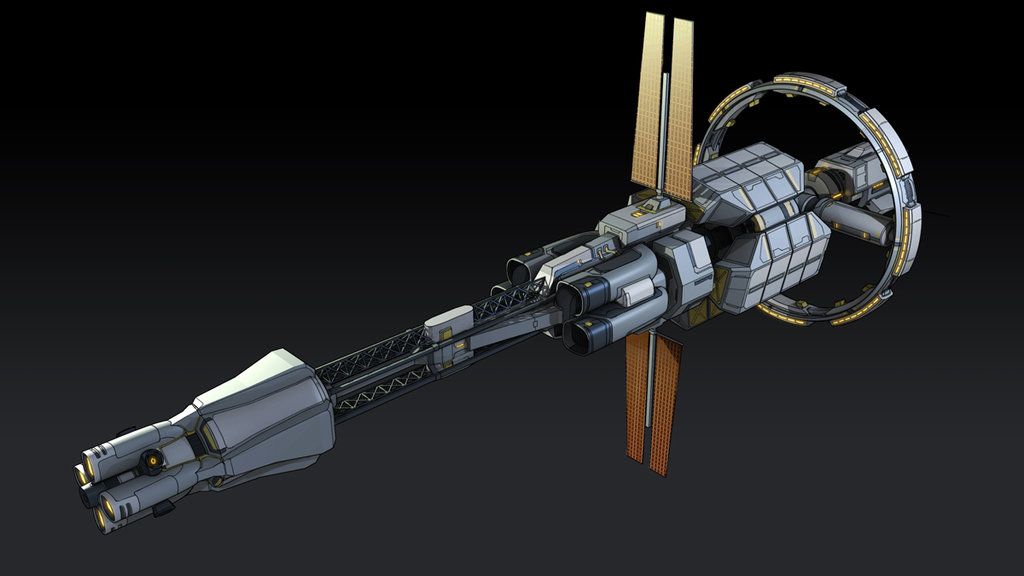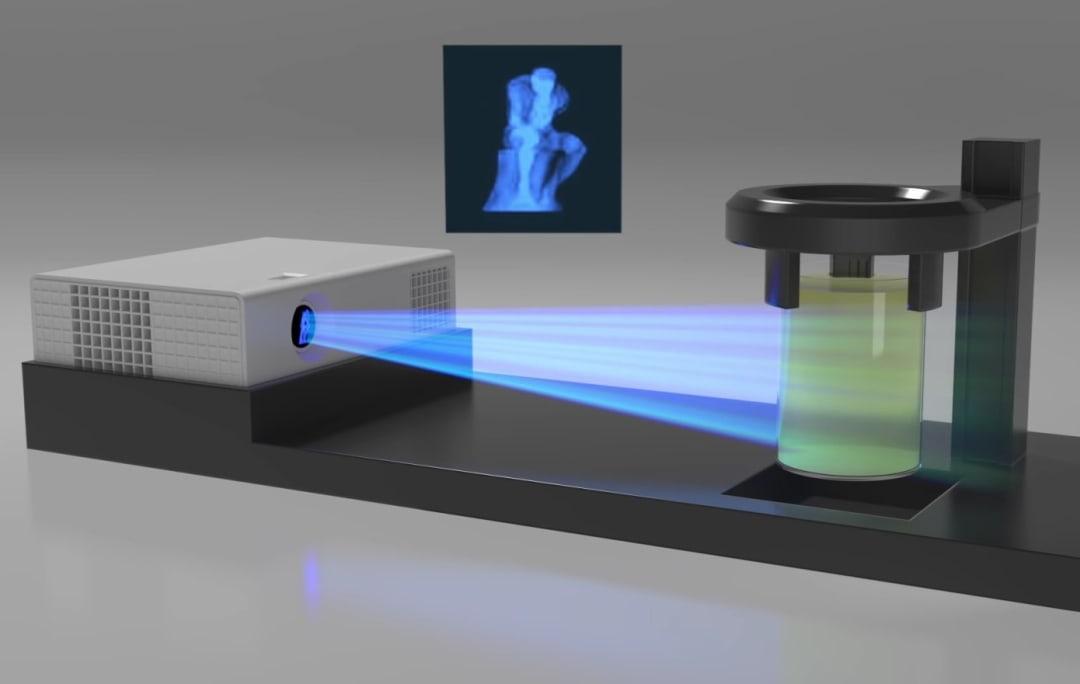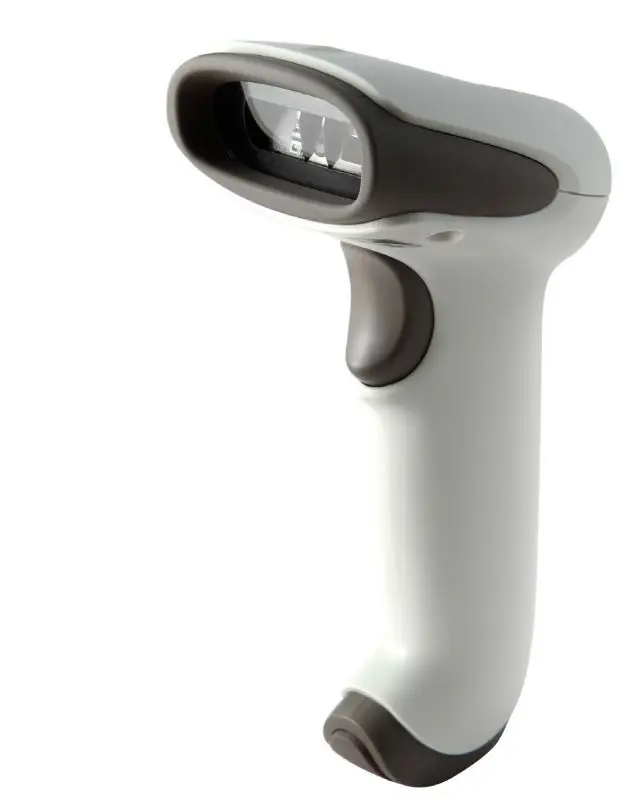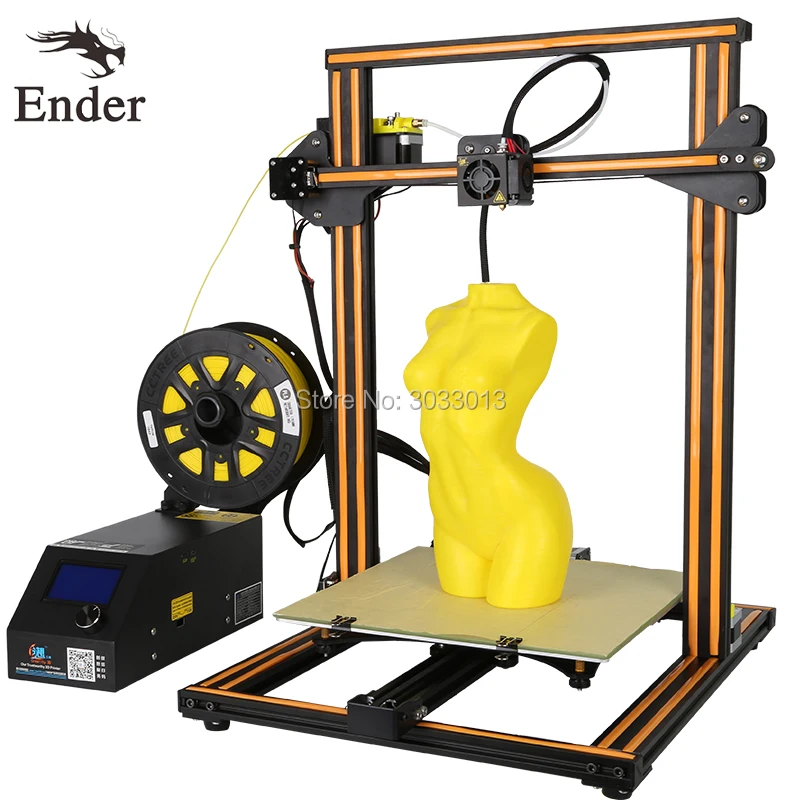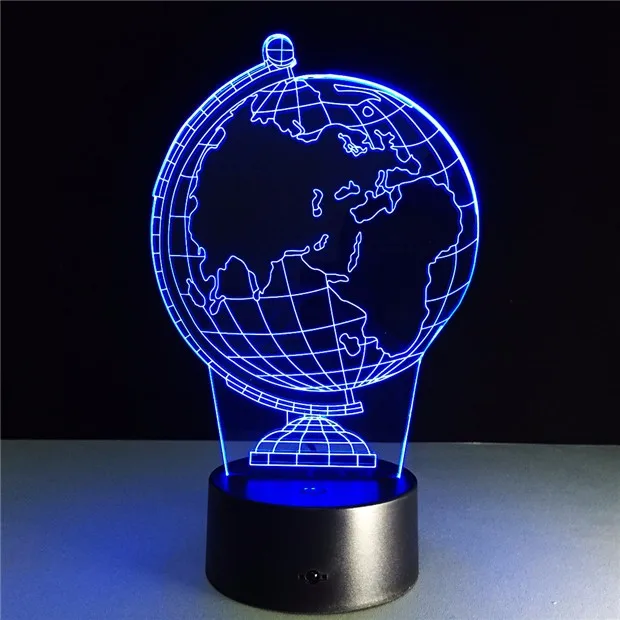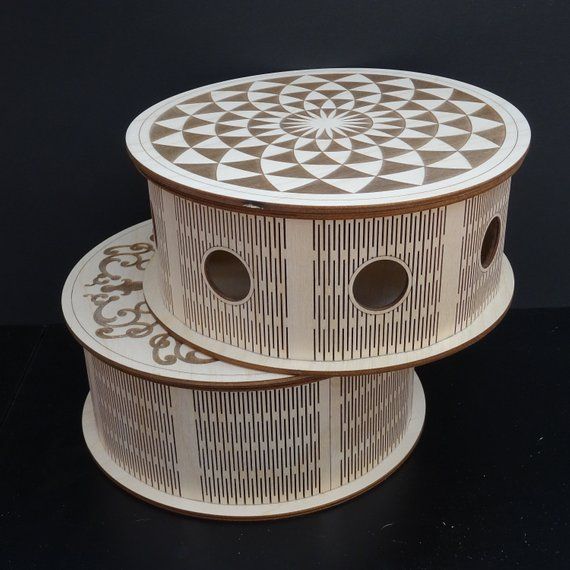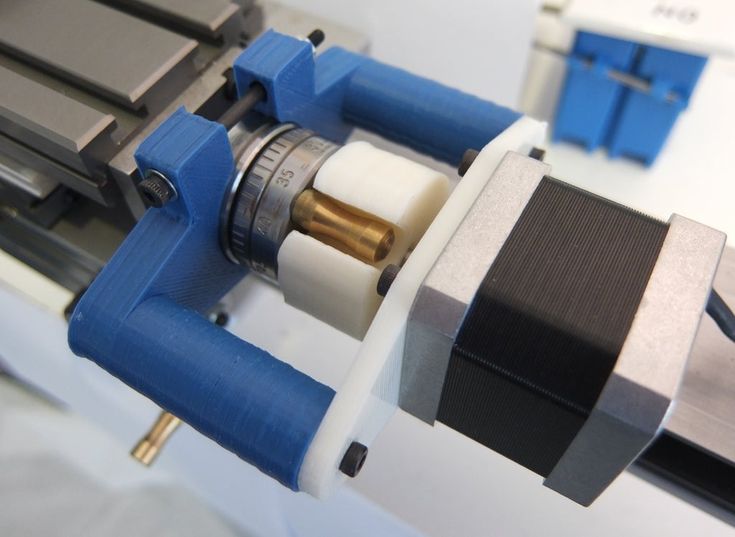3D printed kerbal ships
How to Print Your Ships from Kerbal Space Program
Fan of the game Kerbal Space Program? Ever want to bring your customized space rockets to life? Well look no further! This helpful guide will put those little rockets right in the palm of your hand.
Posted on December 18, 2015
by
Tyler Anderson
This is a guide to show you how to print your ships from Kerbal Space Program, the game where you launch overenthusiastic little green men into space on rockets of your own design. We'll be using Dasoccerguy's excellent KSPBlender add on to import the .craft file into Blender, where we will clean it up and generate a .stl for printing. This guide was written with MatterControl in mind, but it is applicable to any 3D printing software. KSP has evolved as a game quite a bit since this article was published, some of the steps may no longer be accurate to the current state of the game.
- Kerbal Space Program
- Blender
- MatterControl
- io_kspblender
- io_object_mu
- In this guide, we're going to use one of the stock ships from the game, the Kerbal X.
We also printed the Stearwing D45.
- You may want to remove some of those struts. They are very thin, so they don't print well, and KSPBlender has trouble with them.
- You can have as many boosters as you want, though.
- Open the blender User Preferences by pressing CTRL + ALT + U or going to File > User Preferences
- Go to the Addons page
- Install both addons by clicking the Install From File button and choosing the zip file that you downloaded
- After you install each addon, enable it by clicking the check box to the right of its listing.
- Save User Settings
- KSPBlender needs to know where the game assets are in order to get the models and textures.
- Because it is pulling the data directly from your game folder, it will work with any addons you have installed as well.
- If you are using Steam, you can find out where the game data is by right clicking and going to Properties, then hitting Browse Local Files under the Local Files tab
- Put the location of your game folder into kspdir.
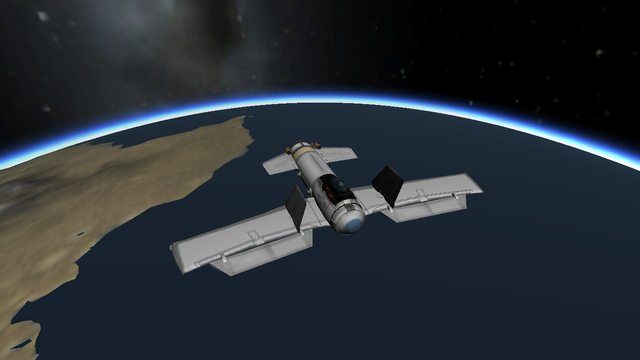 txt
txt - On Linux this file will be in ~/.config/blender/2.75/scripts/addons/io_kspblender-master/
- On Windows it will be in C:\Users\{user}\AppData\Roaming\Blender Foundation\Blender\2.75\scripts\addons\io_kspblender-master\
- On the Mac its in the Blender application bundle
- Delete the default cube from the scene by pressing A until all objects are selected, then X.
- Import the .craft file
- Go to File > Import > KSP Craft (.craft)
- Browse to the game folder, then you will find your ships in the Ships folder.
- Your ship will be imported with all possible parts, including things like parachutes and launch stability enhancers.
- Actually, you might want to keep the launch stability enhancers, since they will help support the ship during printing.
- To delete an object, right click to select it.
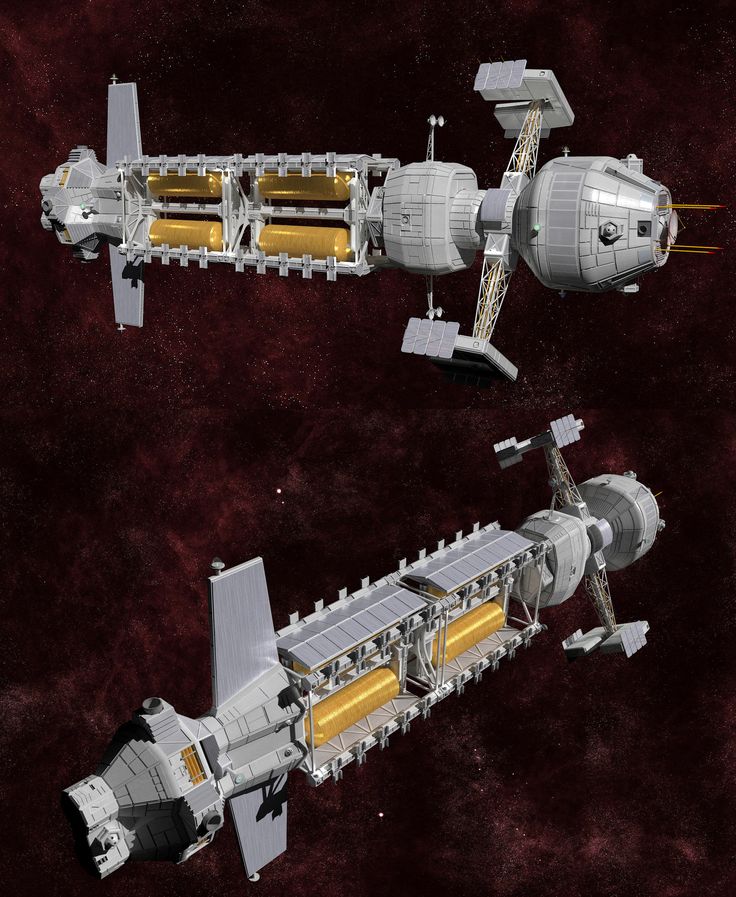 Then press K to bring up the KSPBlender menu and choose Delete Part.
Then press K to bring up the KSPBlender menu and choose Delete Part. - You can also delete a part by finding it in the Outliner, right clicking, and choosing Delete Hierarchy.
- Moving parts may not be imported in the configuration you want to print. These include landing gear, cargo bays, solar panels, etc.
- Select the object, then bring up the K menu and choose Toggle Deploy.
- The dimensions of the model are given in Kerbal meters, however the slicer will interpret the units as millimeters, resulting in a very small print.
- Some parts are extremely thin. For instance the interstage fairing and engine bells. Make sure you scale the model large enough so that these things will actually be printed.
- You can check whether or not a part will be printed correctly by viewing the G-Code in MatterControl.
- Scaling can be done either in Blender or after you have imported the model into MatterControl.
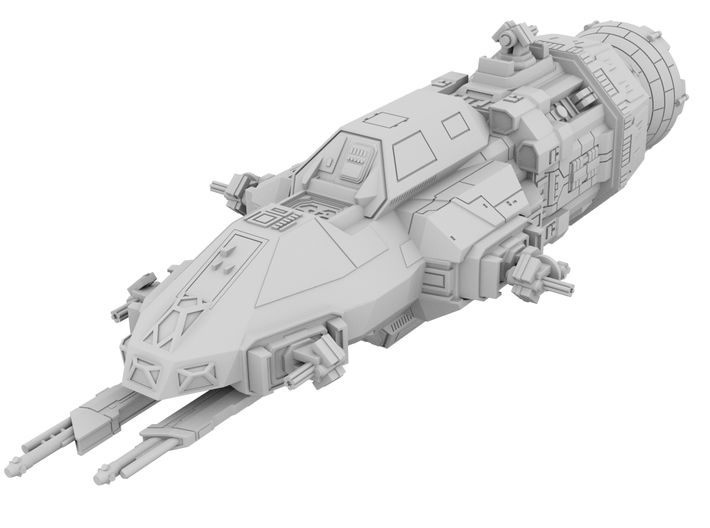
- To scale in Blender, press A until everything is selected, then press S. Either drag the mouse to the scale you want or enter values in the pane on the left.
- In order for the pane on the left to work, you may need to enable Global Undo in the Editing page of the User Preferences.
- You can also scale the model in MatterControl using the edit function.
- To scale in Blender, press A until everything is selected, then press S. Either drag the mouse to the scale you want or enter values in the pane on the left.
- If your ship is a spaceplane, you may want to rotate it so it prints vertically. Press R in Blender to rotate.
- This function unifies all parts of the ship into a single manifold mesh.
- This is especially important to use if your ship has part clipping. The slicer will not fill in the spaces where objects intersect.
- Select a part of the ship, then bring up the K menu and choose Make 3D Printable.
- You may get an error regarding multi-user content. You can fix this by selecting everything then pressing U to make everything single user.
 Select object & Data from the menu.
Select object & Data from the menu. - An alternative to this step would be to run the exported STL through a service like NetFabb or MakePrintable.
- Press A to select all.
- Go to File > Export > Stl (.stl)
- Drag and drop the STL file into the MatterControl Queue.
- Some of the engine bells are very thin on the end. To deal with this, we just used bottom clipping, so it would skip the first few layers which are too thin to print.
- Remember to turn off bottom clipping before your next print.
- Support material will almost undoubtedly be required. Our standard recommended support material settings are...
- Overhang Threshhold: 30 degrees
- Pattern Spacing: 2.5 mm
- Interface Layers: 0
- Z Gap: 1 layer
- Detailed models like this are prone to stringing. To minimize this, have a look at our guide on optimizing retractions.

- The Layer View in MatterControl will let you preview the print so you can make sure it will turn out how you like.
- The print will have all the features of the actual in-game ship, including engines inside of stage fairings and things inside cargo bays.
- It won't have the insides of cockpits or the Kerbals themselves, though.
- There is a bug in MatterControl 1.3. If your print looks like a giant mess, try turning off Display Extrusions.
- Check to make sure that thin parts will actually be printed. If not, you may need to scale up the model more or print it in multiple parts.
- If you can't or don't want to scale up the model, the only other thing you can do is edit the mesh for that part in Blender.
- Many slicers have trouble generating support structures under the fins. This is because they are thin and pointy on the bottom. You can either try a different slicing engine, or print the fins separately and glue them on.

Article Tags
- 3D Printing
- Firmware
- 3D Design
- MatterControl
- Press Releases
- Small Business
- Automotive
- E3D
- Jewelry Making
- Engineering
- Entertainment Industry
- MatterControl Touch
- ESD Materials
- NylonX
- BCN3D
- Open Source
- Crafty Pen
- Digital Fabrication Anatomy
- How To
- Hardware and Upgrades
- Tips and Tricks
- Weekend Builds
- Top Ten
- Education
- Tech Breakdown
- Women in 3D Printing
- Project Ideas
- Advanced Materials
- Reference
- Pulse Dual Extrusion
- Product Spotlight
- Aerospace
- Jobs
- Military & Government
- Multi-Tool Machines
- Getting Started
- Healthcare
- How To Succeed With Any 3D Printing Material
- Creality3D
- Architecture
- 3D Printer Reviews
- Hacker of the Month
Related Products
View all related products3D Printing KSP Crafts : KerbalSpaceProgram
I decided to try 3D printing some of my KSP creations, and figured there'd be enough overlap with KSP and 3D Printing enthusiasts that there'd be plenty of great guides online.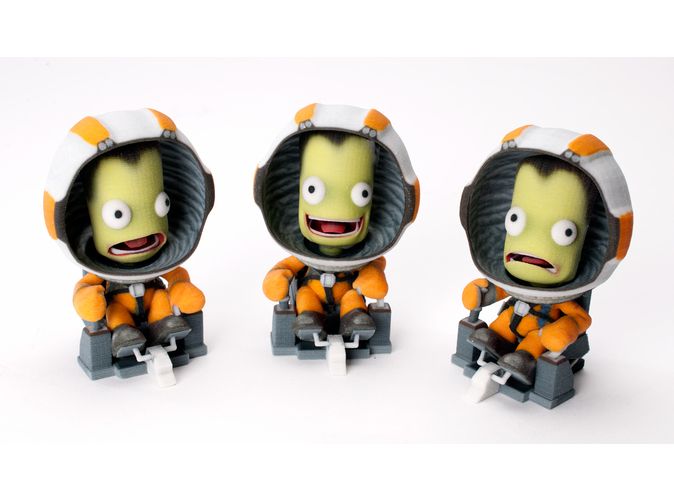
Sadly, I wasn't able to find anything recent, and most of the older ones seemed to be broken by various software updates to Blender. So here's the solution I came up with after a few days of effort which should work even if you've never used blender or edited a mesh in your life. I built this method after stumbling around for a while; there's probably a better way, but finding it would probably require spending hundreds of hours to master Blender, and this seems to work pretty well
Install the .mu Blender tool at https://forum.kerbalspaceprogram.com/index.php?/topic/40056-12-17-blender-283-mu-importexport-addon/. You'll need to go through the install instructions EXACTLY like is presented in the original post, including a fresh copy of Blender 2.83 (NOT THE NEWEST VERSION, you need to specifically download 2.83 LTS). Step 7 says to Save User Preferences; you can access this using the three lines at the bottom left of the Blender Preferences window, but it defaulted to auto-save for me anyways, so it's probably not necessary.

Open Blender, and left click on the cube, light, and camera that come in the default scene in the center, hitting delete on your keyboard after each selection. Alternatively, right click the objects in the top right list, and select delete in the drop down menu. If delete isn't working, make sure your mouse is over the main view window; Blender can be a bit weird about what things do depending on where you have your cursor.
Select File - Import - KSP Craft (.craft), and wait. If the option isn't there, you didn't install the .mu import tool correctly; go back and do step 1 again. If everything works, you should see the craft in the middle of the scene. If you get flashing red warnings, again go over the install steps and make sure every step is done perfectly. If it still doesn't work, you might have an issue with the craft file itself, especially if it uses mod parts you haven't installed in KSP. Not much to do but build a different craft, and try with unmodded KSP and parts.

Left click the model. It should highlight the whole thing. Then in the upper part of the main view window, click Object - Apply - Make Instances Real.
Select File - Export - Stl, and you're done!
Just in case you want to make some edits, like deleting RCS blocks or solar panels for easier printing, or removing some of the random extra things that get added on for some parts like landing gear or engines, do the following additional steps:
6. Again in the upper part of the main view window, click Select - Select All by Type - Mesh. You should see only the craft highlighted, with all the extra random lines left black.
7. Click Select - Invert. Highlights should move from craft to everything else.
8. Hit Delete. You should now only see your craft, without all the random extra components KSP needs for lighting, movement, etc.
9. You can now just click on components on the craft, and hit delete to get rid of them. You can also slide them around, rotate them, or scale them using the tiles on the left side of the view window. Most of these work roughly the same as they do in KSP itself (If only KSP had a scale feature outside mods...)
Most of these work roughly the same as they do in KSP itself (If only KSP had a scale feature outside mods...)
10. When you're done, Select File - Export - Stl.
Of note, the STL File will not be a single solid object, and will instead be made up of a bunch of separate and slightly overlapping parts. I could still print these without issue, but you might have some issues as infill won't work perfectly in many programs. Still, it's better than 95% of other meshes you'll find online, since these at least tend to be watertight.
Hopefully this helps any random 3D printer people who stumble upon this tool, but aren't super knowledgeable about blender. I've had pretty good luck with this working for most stock crafts I found online, and in theory it should be able to pull modded parts as well without too much trouble though I ran into issues.
A few final points:
- The .mu import tool glitches out if you try to import .craft files multiple times in a single session; just close everything and start again between imports
- I've had limited luck with deployable parts; technically the movement is imported into Blender, and if you run the animation, the meshes will 'deploy', so if you know about animating in Blender, you can probably capture that as well. Otherwise just make sure you save the craft in KSP in the state you want to print
Otherwise just make sure you save the craft in KSP in the state you want to print
- The crafts will be very small, since they'll scale to 1m = 1mm in the .stl file. No problem for most printing software, but if you know how to use blender I'd recommend upscaling them to something more reasonable.
https://imgur.com/TBA3a1p - Print from Kerbal 1 Stock Ship - Ignore the crap quality, I basically butchered the support removal and broke the engine off, so I didn't bother cleaning everything else up.
A few sample exports from files from KerbalX (though good luck printing most of them):
https://imgur.com/EPCNvdJ - ISS Model showing proper import into Cura
https://imgur.com/IGmM7PQ - Lander showing proper slicing behaviour for all components
3D printers in military service - big overview
Overview: 3D printers in military service.
Source: https://all3dp.com/
The military industry has always been at the forefront of progress: many inventions either began their life as military or dual-use products, or, in the very first years after their appearance, were involved in this area .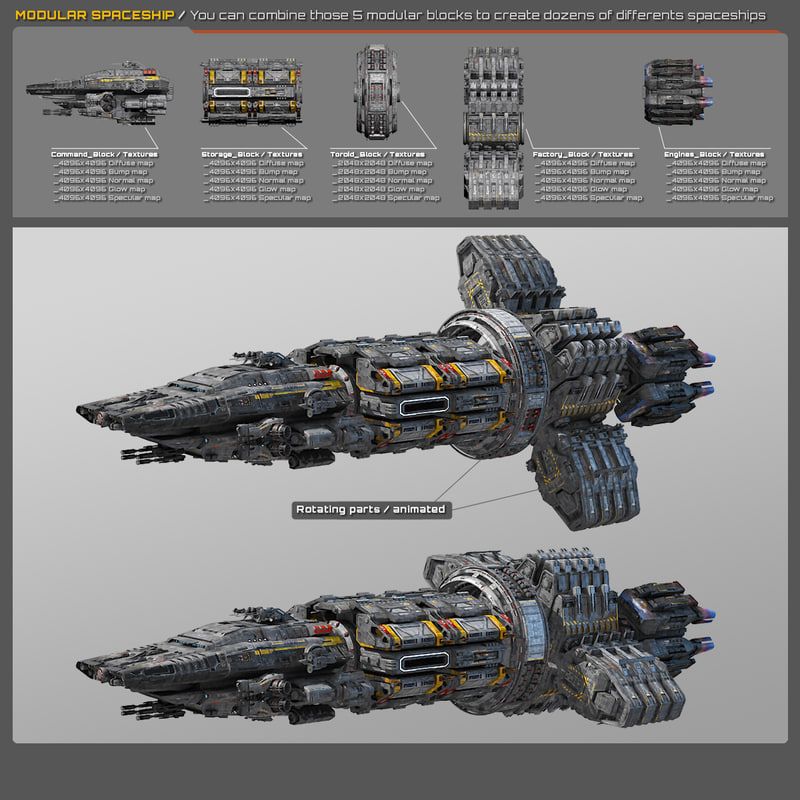 In this age of digital technology, this fate has not escaped 3D printing.
In this age of digital technology, this fate has not escaped 3D printing.
3D printers are actively used by military contractors and direct employees of all branches of the military.
In this article, we will talk about the use of 3D printing in the military-industrial complex around the world: from providing military equipment with spare parts, to operational printing of drones and buildings anywhere in the world.
In Russia,
JSC "Federal Research and Production Center "Titan-Barricades", which develops missile systems and military vehicles, has bought and uses in prototyping a kit based on an XJRP SPS450B 3D printer. The kit consists of two devices: directly a 3D printer with a large print area, working on SLA technology, and a polymer curing chamber.
| XJRP SPS450B 3D Prototyping Kit. |
| Source: http://pechat3d.ru/ |
The 3D printer is planned to be used to create miniatures of future parts, cases or mechanism assemblies.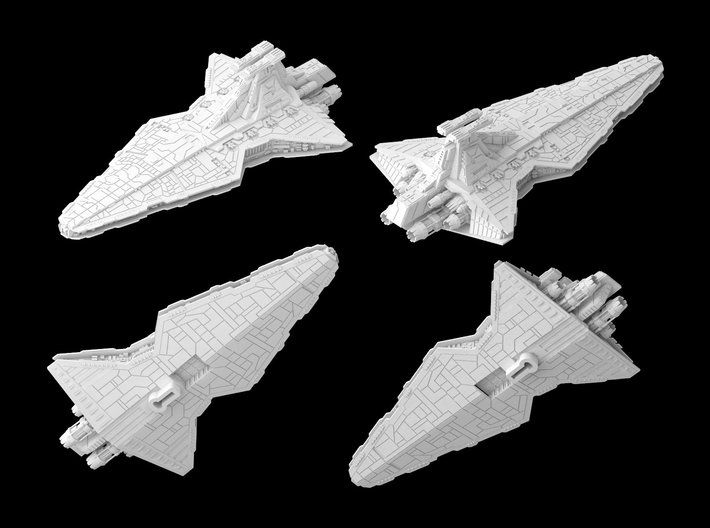 The first product made on this 3D printer was a prototype wheel with a tread.
The first product made on this 3D printer was a prototype wheel with a tread.
Ilyushin specialists plan to produce some simple parts for the Il-112V military transport aircraft using 3D printing.
| Model of the Il-112V transport aircraft. |
| Source: © ITAR-TASS |
Together with specialists from the Voronezh Aircraft Plant (VASO), PJSC Il specialists use 3D-printed parts as test samples, which will be replaced with originals made by the classical method before departure. But in the future, it is planned to master the printing of simple components that will be installed on mass-produced aircraft.
Pavel Chernikov, First Deputy General Director of PJSC Il, said: “The IL-112V is being created from scratch, and many parts and components need to be improved during installation on the aircraft. We started using a 3D printer to see how right or wrong our calculations were.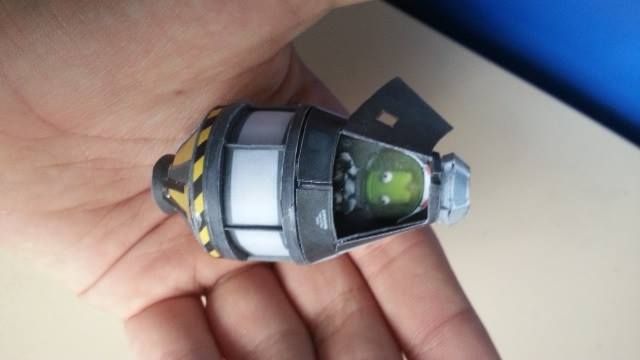 Such technologies make it possible not to interrupt the finalization of finished products, which, in turn, significantly reduces the installation time of equipment and reduces the cost of the production process.”
Such technologies make it possible not to interrupt the finalization of finished products, which, in turn, significantly reduces the installation time of equipment and reduces the cost of the production process.”
Research and Production Corporation "Uralvagonzavod" named after F. E. Dzerzhinsky purchased a 3D printer S-Max manufactured by ExOne.
| ExOne S-Max 3D printer. |
| Source: http://3dtoday.ru/ |
This printer is designed for making sand molds. Molds are used for casting metal blanks. As the deputy chief metallurgist of NPK Uralvagonzavod said: “We will no longer have to manufacture expensive foundry equipment for experimental, new products and complex castings of small series. It will be enough for a designer to develop a 3D model of the required casting, according to which, also in 3D, the mold is made. The finished cores will go to the foundry. In addition, they can be transported to solve the problems of the corporation over any distance. "
"
| A sand mold produced by the S-Max 3D printer, used for casting metal blanks. |
| Source: http://3dtoday.ru/ |
This is not the first professional 3D printing system that Uralvagonzavod uses. In 2015, the company purchased a Fortus 400mc 3D printer manufactured by Stratasys Corporation. This printer is used in the production of parts for the T-14 "Armata" tank and other vehicles manufactured by Uralvagonzavod.
| Tank T-14 ("Object 148") on the platform "Armata". |
| Source: OAO NPK Uralvagonzavod |
Representatives of the enterprise note that the introduction of 3D printing saves time and production resources. It is not required to spend forces on turning metal samples. If a part doesn't fit, it's easier to reprint it than remake it.
Russian Helicopters Holding, according to its CEO Andrey Boginsky, plans to 3D print about a hundred parts for rotorcraft by 2020.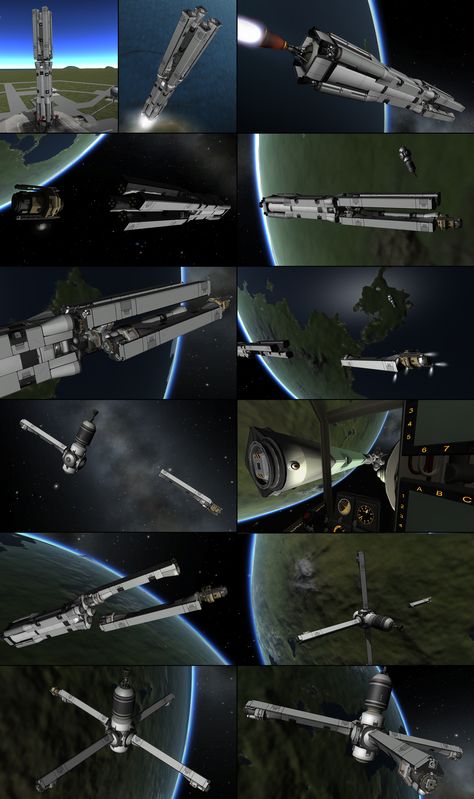
| Andrey Boginsky. |
| Source: © Yuri Smityuk/TASS |
In 2018-2019, it is planned to conduct a series of bench tests in order to obtain all the necessary certificates for printed parts by mid-2020. In total, it is planned to test about a hundred parts and assemblies.
Compared to traditional parts, 3D-printed parts are lighter and their production will be deployed at the Kazan Helicopter Plant. As a result of the use of parts obtained by 3D printing, the holding plans to reduce the cost of products.
In the world
The road of army 3D printing is not paved with roses. When we hear about cool 3D printed military projects, we have to consider some of the challenges that come with doing them.
| Soldiers get acquainted with FORTUS. |
Source: https://all3dp. com/ com/ |
Quality certification problem. Many things that the army is supposed to produce using 3D printing are designed for harsh operating conditions, they are subject to high requirements for compliance with dimensions, geometry and quality, and an unsuccessfully printed part can lead not only to monetary losses, but also to the death of soldiers . This issue will most likely be resolved by certification of the 3D printers themselves.
Insufficient printing speed for the army. Even the most expensive 3D printer is not fast enough. There are also issues of privacy/security, copyright, and many other little things that are not obvious at first glance.
While these issues are being addressed, the US Department of the Navy has decided to host a 3D printing hackathon. 12 organizations were invited to participate, which showed their developments in the field of 3D printing for the Navy. According to the participants, fully or partially printed inventions: “Allow to improve the ability to maintain combat readiness. ”
”
One of the new and memorable developments was the four-legged transporter robot (MeRlin). It turned out to be quite compact and can run, jump and walk up and down stairs. Three-dimensional printing made it possible to create, right in the supporting frame of the robot, a hydraulic manifold that serves to transfer energy to the robot drives. Those interested in robotics will find Merlin similar to the transport robots of Boston Dynamics.
| The device of the robot MERLIN (Merlin). |
| Source: https://all3dp.com/ |
Aviation
A 3D-printed drone was launched from one of the British Royal Navy ships at sea, HMS Mersey. The device was created in collaboration with the University of Southampton.
| Launch of a 3D printed drone. |
| Source: https://all3dp.com/ |
Body made of nylon, laser sintered.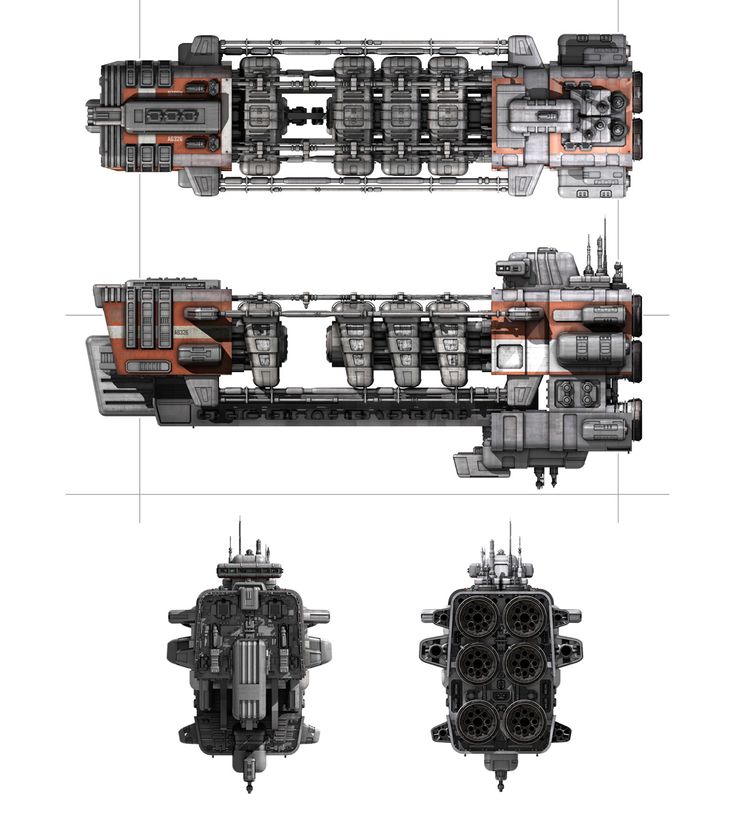 With a wingspan of one and a half meters, the drone weighs only three kilograms. The main task of this project was to create a small drone for exploring the surroundings, which can be quickly printed on board the ship.
With a wingspan of one and a half meters, the drone weighs only three kilograms. The main task of this project was to create a small drone for exploring the surroundings, which can be quickly printed on board the ship.
The drone, named SULSA, was equipped with a small video camera. Management was carried out by researchers from Southampton using video cameras. The flight, with a range of 500 meters, lasted only a few minutes, but proved that 3D printed drones could be launched from the sea.
| The route of the SULSA drone during a test flight. |
| Source: https://www.southampton.ac.uk/ |
3D printing solves the problem of ship capacity by allowing equipment to be printed at sea as needed. The only thing you need to have on board to print a drone is a 3D printer and a supply of nylon, which is disproportionately cheaper than a case made using traditional technologies, and takes up much less space.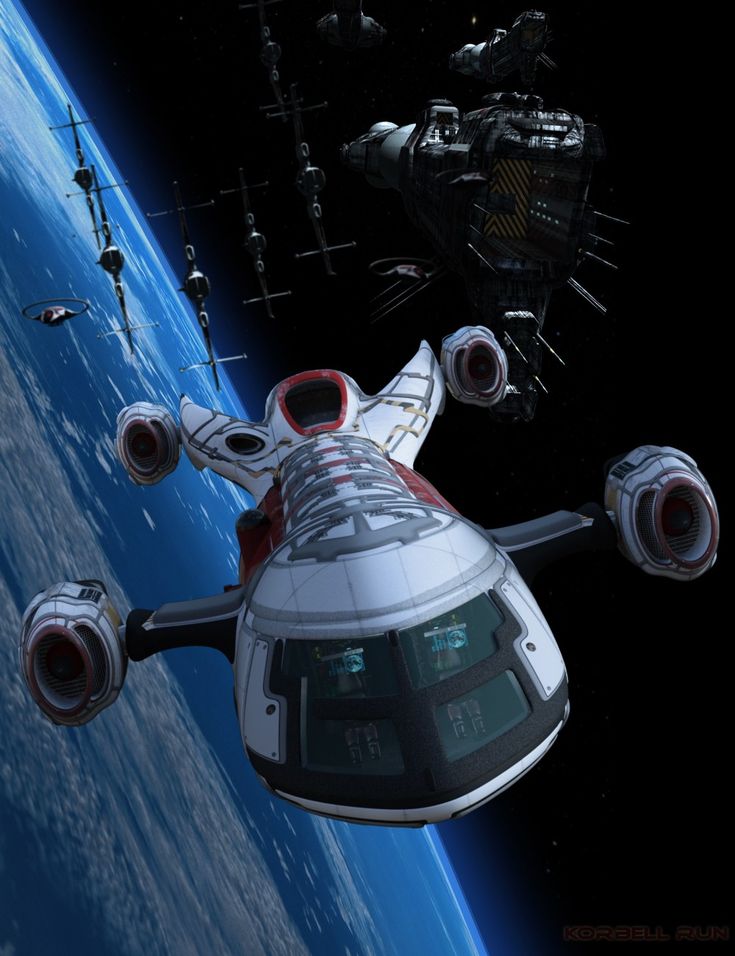
The only drawback is the print speed, but it is expected to improve in the near future. Engineers from the American Army Research Laboratory (ARL) are trying to fight this shortcoming. They are developing drones that can be made within a day. Engineers are building drones that can be used to assist soldiers in communication, delivery, and aerial surveillance.
| Eric Sopero demonstrates his drone to US military personnel. |
| Source: https://all3dp.com/ |
Drones are made using off-the-shelf motors and propellers, but their body is almost entirely 3D printed. The maximum speed of the drone is 55 miles per hour. Drones can either be controlled by the operator from the remote control or operate in a completely autonomous mode. Work continues to reduce noise and increase flight range, maneuverability and payload.
The US Army is partnering with the Marine Corps to develop an unmanned vehicle parts catalog that can be downloaded to an employee's tablet. The software of this catalog allows you to order or 3D print a product directly from it.
The software of this catalog allows you to order or 3D print a product directly from it.
| American soldier with a drone. |
| Source: https://all3dp.com/ |
In addition to experiments with drones, 3D printing is also used in “big” aviation.
For example, the US Air Force has announced that it will 3D print toilet seats for military transport aircraft. The announcement comes after a scandal erupted when it was reported that each toilet seat cost the Air Force $10,000 to replace.
| Airplane seat for $10,000. |
| Source: https://all3dp.com/ |
The public, which already believed that the government did not always save on military spending, was extremely outraged. After an investigation initiated by one of the senators, the military department announced that it would print toilet seats on 3D printers.
Why is the toilet lid so expensive? These covers were mass-produced by Lockheed Martin, and in 2001 this giant of the military industry stopped their production. In addition, the military department explained that the C-5 toilet seat is not only a cover, but also part of the lavatory wall, which is designed to protect the body of the aircraft from corrosion that can be caused by urine.
According to the manufacturer, its high cost is due to the need to suspend the production of other goods. In the case of independent production of the Air Force, the spare part will cost only $300.
The manufacturer now claims that the US Air Force does not own the copyright to this cap. It is not known how this lawsuit will end, but the Air Force says that they will no longer buy this spare part, because they can make it themselves much cheaper.
As stated by the department: “The use of 3D printing allows us to create parts that are no longer being produced, resulting in significant cost savings.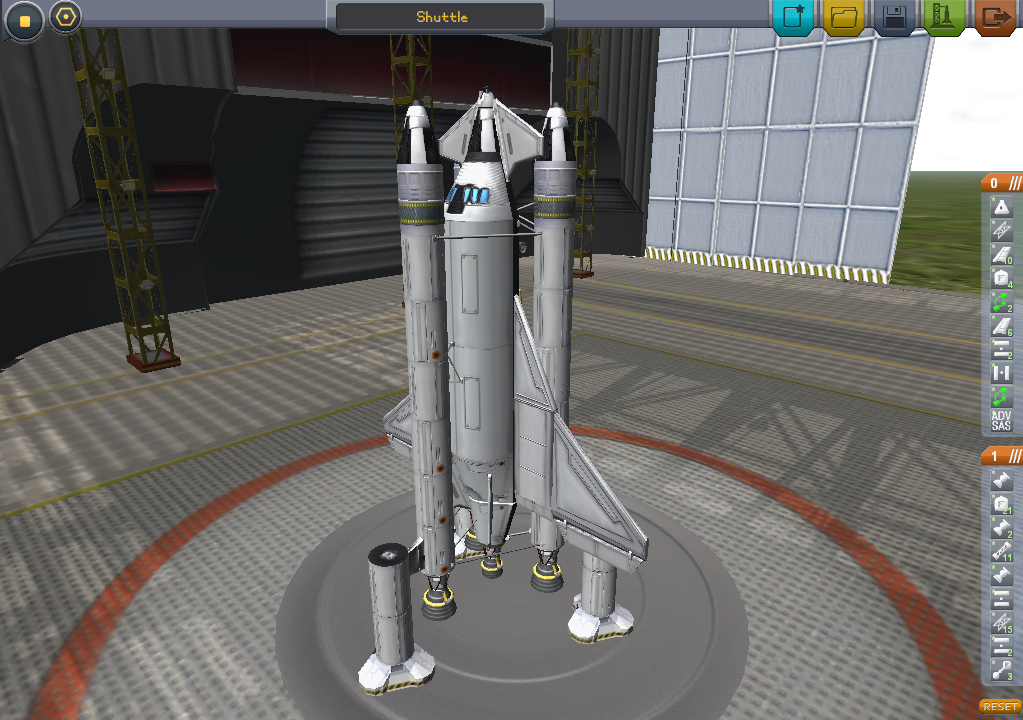 ”
”
| C-5 transport aircraft. |
| Source: https://all3dp.com/ |
Another example of 3D printing was demonstrated by the Maryland Marines. Using 3D modeling and 3D printing, they made a $70,000 F-35 fighter jet part for just 9 cents. The Marines were assisted by Sam Pratt, a mechanical engineer in the design office of the Carderock Additive Technology Factory.
Sam revealed that he was with a support platoon in South Korea teaching CLB-31 Marines how to design 3D models and how to use 3D printing. His main task was to test the performance of 3D printers on marine vessels. He also taught employees how to use Solidworks CAD.
| Sam Pratt talks to the Marines about 3D printing. |
| Source: https://all3dp.com/ |
When there was a problem printing a part needed to repair an F-35, a Marine officer offered to team up to cooperate. It turned out that the employees had already developed this part, but could not find the right dimensions. The fact is that they used a hobby-grade 3D printer and the free 3D editor Blender - Blender is ideal for implementing art projects, but it is difficult to create engineering products in it.
It turned out that the employees had already developed this part, but could not find the right dimensions. The fact is that they used a hobby-grade 3D printer and the free 3D editor Blender - Blender is ideal for implementing art projects, but it is difficult to create engineering products in it.
| American Marine at the 3D printer. |
| Source: https://all3dp.com/ |
Pratt helped with modeling and printing issues, the part was printed in PET-G.
Currently there are about 90 parts for ground vehicles that are approved for 3D printing in the military, you can download one of these parts and print it.
Large manufacturers are also moving forward and mastering 3D printing technologies. Thus, the giant of the aviation and military industry Lockheed Martin is actively investing in 3D printing.
Lockheed Martin uses 3D printing in its manufacturing processes, with over a hundred 3D printers in its arsenal for prototyping, tooling and printing finished products.
There are several reasons why Lockheed Martin uses 3D printing:
- Reducing the time of production of products - up to 80%;
- Reducing the weight of parts - up to 40%;
- Proven reliability of parts in difficult conditions;
- The most important thing is the possibility of an additional increase in production in the near future.
For example, it takes 18 to 20 months to manufacture fuel tanks for spacecraft using traditional technologies. The production of such a tank by 3D printing takes two weeks. In this case, a better uniformity of the structure of the tank elements is achieved. The tanks are manufactured using a Sciaky printer using EBAM (Electron Beam Direct Manufacturing) technology, in which a bar of metal material is heated by an electron beam.
| Lockheed Martin uses 3D printing in its manufacturing processes. |
Source: https://all3dp. com/ com/ |
Lockheed Martin's 3D printed products have already passed the lab testing stage and are in active use. Some of them travel around our solar system: the Jupiter-exploring Juno satellite has eight 3D-printed brackets, and the Orion spacecraft uses printed high-pressure valves.
Fleet
South Korea is 3D printing loudspeaker grilles for aircraft carriers. Shipping these gratings from Europe took up to seven months and cost $612 each. The printed part is made in 4-5 hours and costs about $35. Printing parts reduces their cost and production time, and localization of production reduces dependence on foreign supplies, which may be delayed or become unavailable for various reasons.
General Electric has contracted with the US Navy to develop software for rapid 3D printing of spare parts for ships, aircraft and other critical military installations. The contract, worth nine billion dollars, is designed for four years and provides for the creation of technology "digital duplicates" - a complex of software, base models and hardware. This technology will be used both for those spare parts that are no longer manufactured, and for new parts of ships and aircraft.
This technology will be used both for those spare parts that are no longer manufactured, and for new parts of ships and aircraft.
| Concept Laser M2 3D printer printing with metal powder. |
| Source: https://all3dp.com/ |
The project is being implemented in two stages: at the first stage, software and hardware parts will be developed, at the second stage they will be combined into a complex capable of quickly creating the necessary products using laser metal melting technology (DMLM).
Ammunition and small arms
The US Army has designed and 3D printed a fully functional grenade launcher called "R.A.M.B.O". The development of the grenade launcher took about six months. He fires 3D printed grenades
| R.A.M.B.O. grenade launcher |
| Source: https://all3dp.com/ |
The grenade launcher consists of 50 parts, all of which, with the exception of springs and hardware, are printed on a 3D printer.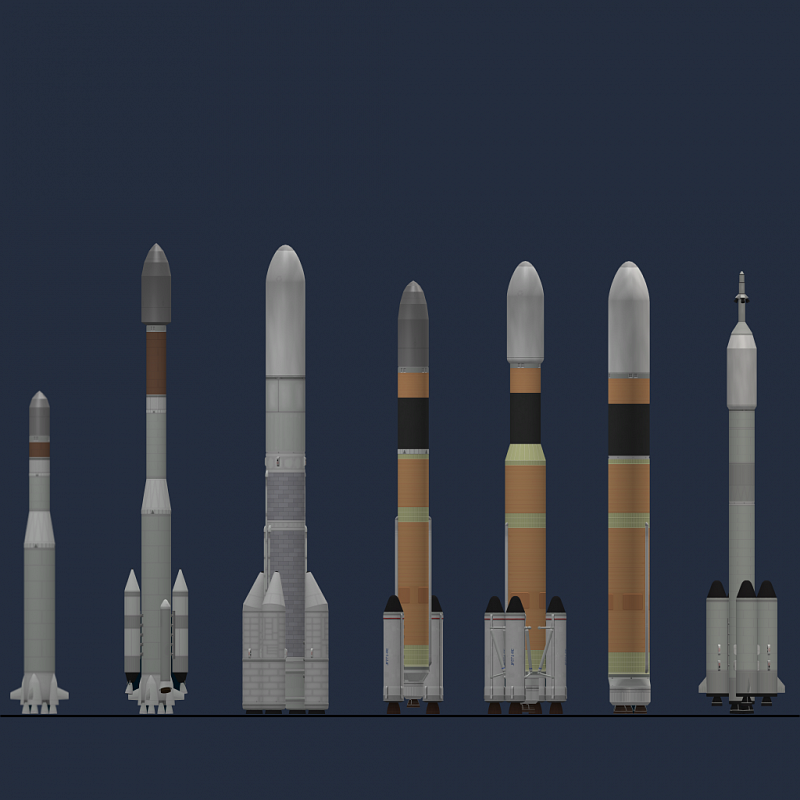
| 3D printed parts of the R.A.M.B.O. |
| Source: https://all3dp.com/ |
R.A.M.B.O. demonstrated characteristics similar to the M203 underbarrel grenade launcher made in the traditional way.
A US Marine team is 3D printing and testing small explosive containers that can be used on the battlefield.
| 3D printed container for explosives. |
| Source: https://all3dp.com/ |
The development of small arms began in the private sector, with the most primitive pistols. On the Internet, you can find drawings of products such as the sensational Liberator. The first 3D printed pistol was printed on a professional Stratasys Dimension SST printer. The gun is chambered for 9 caliber rounds.mm and is charged during assembly.
A gun whose main components are made of plastic and printed using a 3D printer.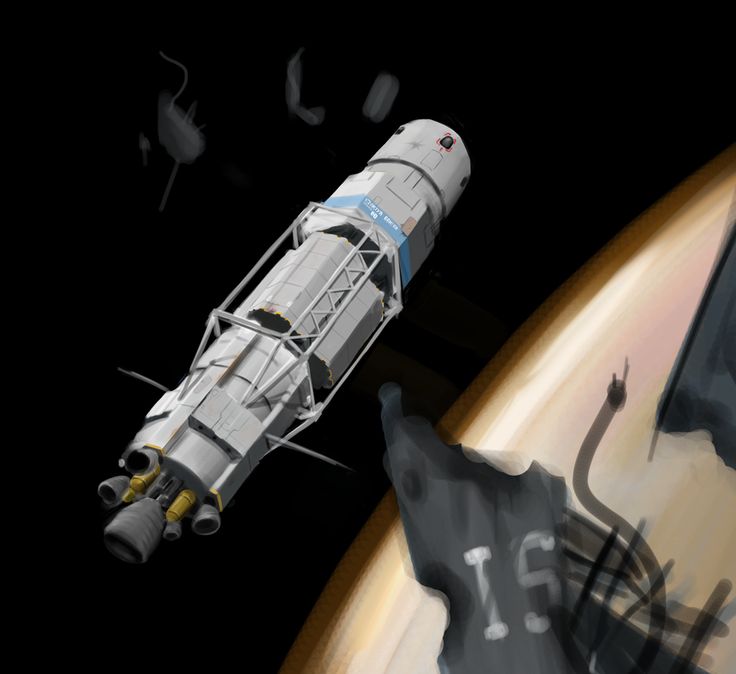 Frame: YouTube. Frame: YouTube. |
| Source: YouTube |
The very possibility of obtaining weapons using 3D printing so excited the public that the drawings of the "Liberator" were withdrawn from public access, and the United States introduced a ban on 3D-printed weapons.
Solid Concepts has created a replica of the .45 Browning M1911 pistol, the Solid Concepts 1911 DMLS, using selective metal laser sintering. The first sample withstood 50 shots, later ones are capable of firing 600 shots without visible damage.
| A working replica of a .45 Browning pistol M1911 - Solid Concepts 1911 DMLS, made by selective metal laser sintering. |
| Source: Solid Concepts Inc |
Recently, the ban on the distribution of 3D printed weapons was lifted by a court decision. So, it is now possible to print weapons in the USA, with some restrictions: they can be no more than 50 mm in caliber and models cannot be freely available.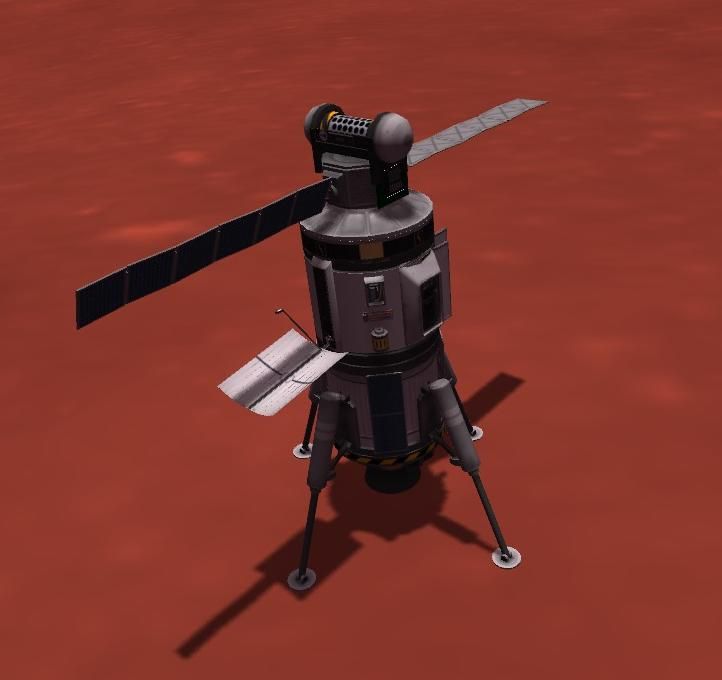 This ban was easily circumvented by Defense Distributed, which posted models of their rifle for sale on one of the online services.
This ban was easily circumvented by Defense Distributed, which posted models of their rifle for sale on one of the online services.
| M4 rifle from Defense Distributed. |
| Source: https://depositphotos.com/ |
“Our models are not in the public domain because customers pay money for them,” a company spokesman said.
Uniforms and protection
The Vatican decided to use 3D printing technology for the production of traditional Swiss Guard headdresses.
| Swiss Guard. |
| Source: https://all3dp.com/ |
The Swiss Guard is the personal bodyguard of the Pope. From time immemorial, their form was made of metal, but now they have decided to keep up with the times. A 3D printed helmet will be significantly cheaper and, more importantly, lighter.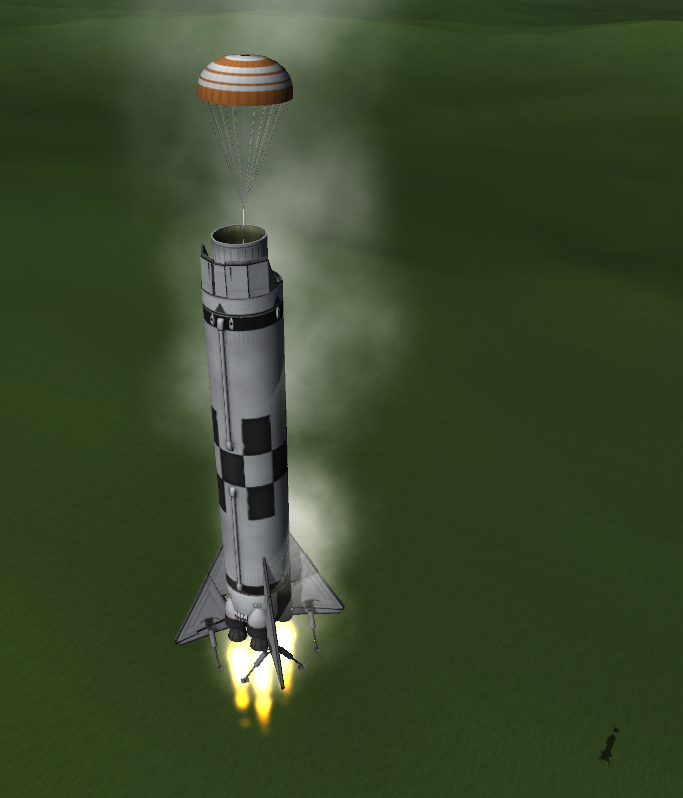
| 3D printed helmet prototype. |
| Source: https://all3dp.com/ |
The helmets are made of PVC and bear the coat of arms of Pope Julius II, who founded the Swiss Guard in 1506.
The US military turned to the creators of the Iron Man costume, a movie character, for help in creating uniforms for the soldier of the future. The military commissioned Legacy Effects to develop and print the prototype components for the TALOS Special Outfit Kit.
TALOS will contain a cooling system to maintain a comfortable temperature in the suit, a tactical display and an integrated exoskeleton.
| The concept of the uniform of the future - a set of special uniforms TALOS. |
| Source: http://3dprintingindustry.com/ |
The studio team will join the large team already working on the project, which includes bioengineers, combat veterans and technologists.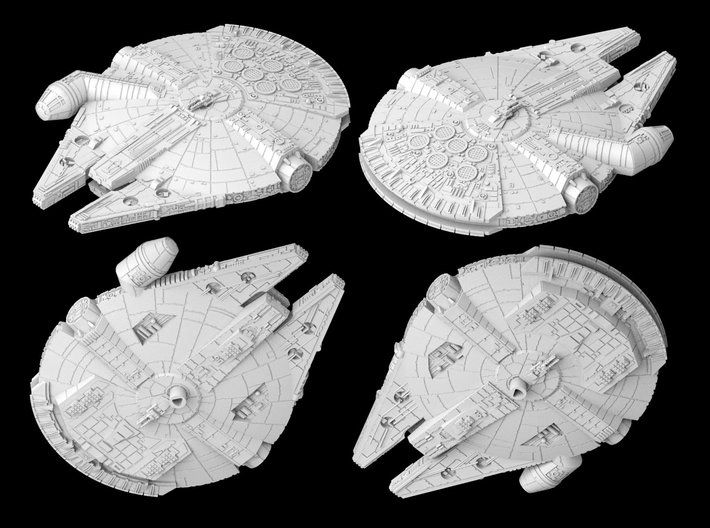
Building
The US Army Research Engineering Team printed a large building in just 21 hours. The area of the building is 47.5 square meters. The barrack-style building is the result of a three-year US Army Construction Engineering Research (ACES) program with a laboratory in Champagne, Illinois.
| 3D printed barracks. |
| Source: https://all3dp.com/ |
Such a short construction time means that such temporary structures will become more affordable with the development of 3D printing. These buildings can be used as housing for refugees or temporary housing in case of natural disasters.
| The process of building a 3D printer. |
| Source: https://all3dp.com/ |
The building looks like an ordinary house, but in the future such buildings can be given any look. Such buildings are also more energy efficient than traditional ones - they require less energy for heating and cooling.
Such buildings are also more energy efficient than traditional ones - they require less energy for heating and cooling.
ACES cuts the amount of building materials used in half. Reducing the need for labor is 62%, compared with the construction of plywood structures.
| Laying concrete mix with a construction 3D printer. |
| Source: https://all3dp.com/ |
ACES allows buildings to be printed using local materials.
Self-Sufficiency
A collaboration between the US Army Research Laboratory and the Marine Corps has led to the development of a technology to produce 3D printed PET filament from plastic waste such as water bottles.
According to the military, water bottles and plastic packaging are the most common litter on the battlefield. Both US and allied forces produce large amounts of this waste, and the ability to recycle it will reduce the cost of transporting raw materials.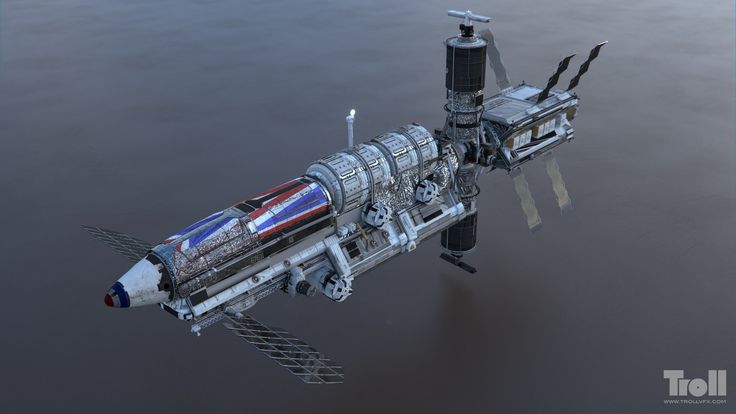 The filament obtained from recycled materials, provided that it is properly cleaned and dried, is completely equivalent in tensile strength to its analogue from primary raw materials.
The filament obtained from recycled materials, provided that it is properly cleaned and dried, is completely equivalent in tensile strength to its analogue from primary raw materials.
| Joint work of employees of the Research Laboratory of the US Army and the Marine Corps. |
| Source: https://all3dp.com/ |
A plant is being developed, housed in a standard shipping container, that will allow the production of filament from waste.
The US Army is also developing food printers. Their advantages are obvious:
- the possibility of reducing the cost of food, compared with the traditional delivery of rations from abroad;
- the possibility of compiling an individual menu, in accordance with the preferences of each soldier;
- the possibility of individual balancing of the diet, depending on the dietary needs of each soldier.
The printer, like classic 3D printers, stacks components in layers.
| 3D printed food. |
| Source: https://all3dp.com/ |
The printer uses the ultrasonic agglomeration method to 3D print small snacks.
Electronics
Researchers at the University of Massachusetts Lowell have developed a new way to 3D print conductive components for radar systems. They have created a new type of ink that allows radars to be made using 3D printing.
| Electronic components obtained by 3D printing. |
| Source: https://all3dp.com/ |
The development was sponsored by Raytheon, one of the defense industry companies.
According to the developers: “The use of this technology makes it possible to obtain cheaper and more versatile systems than those obtained by classical methods. This technology has obvious advantages in the military sphere, but it can also be used in civilian industry, for example, in the production of weather stations or unmanned vehicles.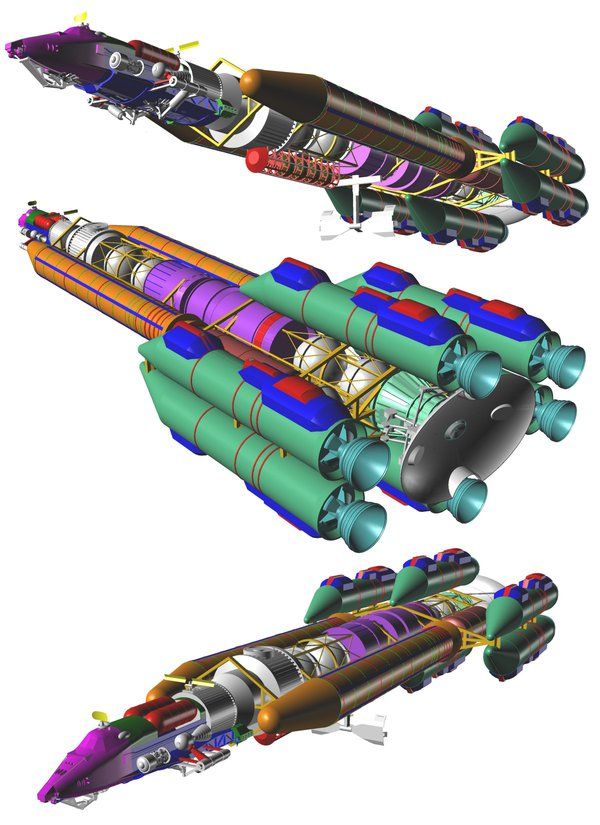 The main problem was obtaining ink with desired properties, capable of working with high-frequency radiation.”
The main problem was obtaining ink with desired properties, capable of working with high-frequency radiation.”
| Applying ink to a plastic plate. |
| Source: https://all3dp.com/ |
The 3D printer is equipped with two heads with different operating principles. One applies the ink by spraying, the second fixes them by microvibration. Radar system components such as a voltage controlled capacitor (varicap), phase shifter (for electronic control of phase array radar systems) and frequency filters can be manufactured using this technology.
The ink material is based on nanoparticles that can be injected into molten plastic and then solidify with it, creating conductive structures.
The US Air Force Research Laboratory teamed up with American Semiconductor to create a silicon-polymer memory chip.
Using 3D printing technology, they have developed a new ultra-flexible chip with built-in sensors.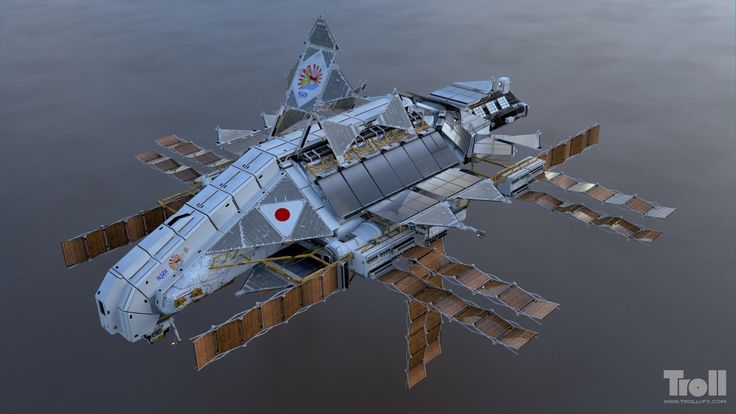
| Dan Berrigan holding the new flexible chip. |
| Source: https://all3dp.com/ |
According to American Semiconductor, the thickness of the silicon wafer is 2000 angstroms. This tiny chip can measure humidity levels, temperature, muscle fatigue, and so on. This makes it ideal for use in new technologies for monitoring the well-being of wounded soldiers or the elderly.
Flexible electronics technology is being developed not only by research laboratories, but also by industry giants.
Apple, Boeing and the Massachusetts Institute of Technology formed an alliance to collaborate with the US Department of Defense in the field of flexible electronics.
The goal of the alliance is to have high quality flexible electronics by 2020.
The Department of Defense plans to provide a consortium called the FlexTech Alliance with $75 million over 5 years and raise $96 million in additional funding.
| Smart clothes. |
| Source: https://all3dp.com/ |
The consortium includes 96 companies, 11 specialized laboratories, 42 universities and 14 state and regional organizations. The key partners of the consortium are Apple, Boeing, General Electric, General Motors, Lockheed Martin, Motorola Mobility, Qualcomm and many others. Partner universities include Cornell, Harvard, Stanford, New York University and the Massachusetts Institute of Technology.
Practical applications will be primarily focused on military targets, such as uniforms with vital sign monitors. Pressure sensors can also be installed on vehicles to monitor deformation in key areas.
The civilian application of such microcircuits will help athletes control body function and improve performance, and people suffering from cardiovascular disease, control and prevent seizures. This technology will allow hospitals to monitor their patients en masse.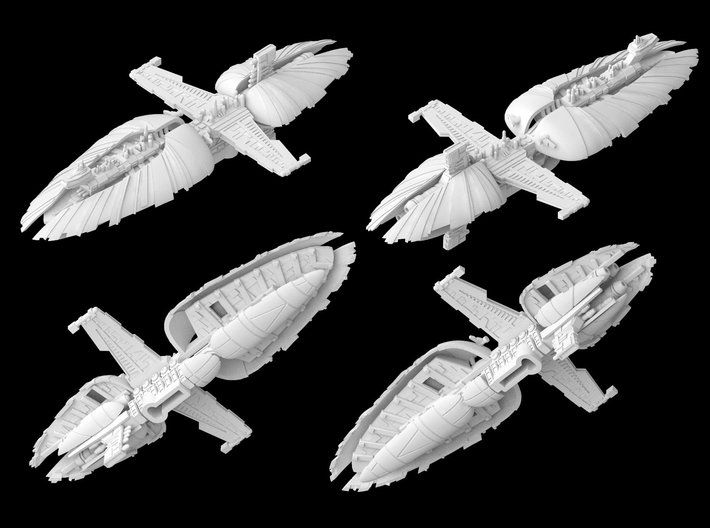
Concepts or Looking Ahead
British scientists and engineers are working on growing military drones using chemical technology.
| Hydroponic chemputter. |
| Source: https://all3dp.com/ |
Military developers explore all possible and impossible technologies. In this case, they are working on a "chemcomputer". “Chemputer” is a registered trademark of BAE Systems. The technology is being developed by Professor Lee Cronin of the University of Glasgow and is a 3D printing of biomaterial drones and aircraft.
Unlike classic 3D printers, a chemputter performs chemical reactions at the molecular level, creating everything from electronics to wings.
| Drone prototypes. |
| Source: https://all3dp.com/ |
While British scientists are inventing new technologies in printing for the military department, simple makers are creating weapons of the future using conventional 3D printers.
So, David Wirth created a hand railgun in his workshop.
| David Wirth with his railgun. |
| Source: https://all3dp.com/ |
Possibly inspired by the computer game Quake, he created this weapon using CAD, a 3D printer and an Arduino platform. The railgun can use aluminum or graphite bullets as ammunition, firing them at a speed of 250 m/s. The design is based on six huge capacitors, which, with a total weight of about nine kilograms, store more than 1800 joules of energy for each shot. The railgun also consists of batteries, two parallel contact rails and a pneumatic ammunition supply system.
| Diagram of a railgun by David Wirth. |
| Source: https://all3dp.com/ |
Conclusion
3D printing technology is increasingly used in the military.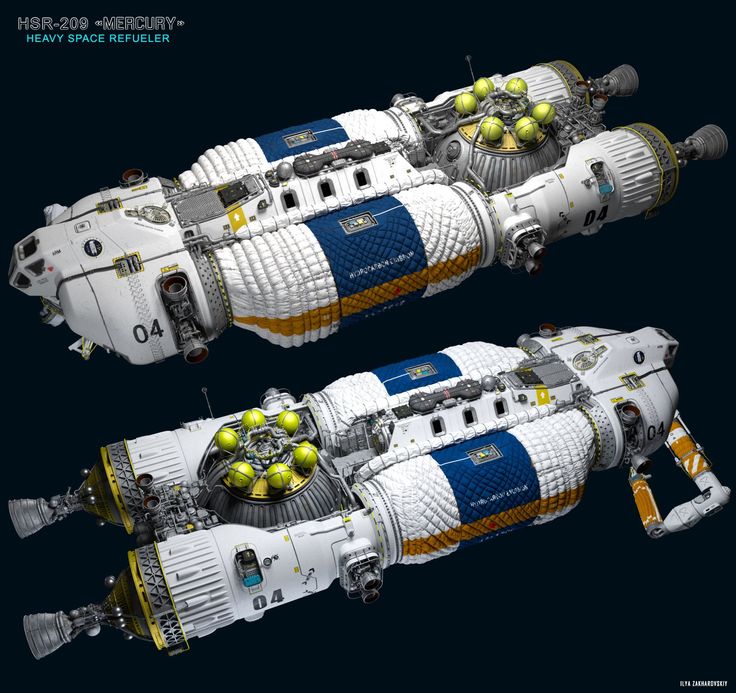 The main role in its promotion is played by the need to reduce costs. On-site 3D printing of parts helps to solve the problems of logistics and supply, allowing you to save time and money on delivery, which is important for the army and aviation, and even more so for the navy - it is impossible to foresee ashore and take with you everything that you might need, and delivery boarding at sea is expensive.
The main role in its promotion is played by the need to reduce costs. On-site 3D printing of parts helps to solve the problems of logistics and supply, allowing you to save time and money on delivery, which is important for the army and aviation, and even more so for the navy - it is impossible to foresee ashore and take with you everything that you might need, and delivery boarding at sea is expensive.
We have cited only a small part of the military cases as examples - it is impossible to describe in one article all the prospects for the use of 3D printing in the military industry. And most of the solutions used by the military in production are also relevant for the civilian sector.
You can buy a 3D printer for production in Top 3D Shop — our experts will help you choose the best equipment for solving any tasks.
. 112V, corporation "Uralvagonzavod", 3D printer S-Max
3D printing and space: the most important
1. The use of additive technologies in the manufacture of spacecraft parts.
3D printing is actively used in the aerospace industry for the manufacture of prototypes, engine parts and tooling. Its use allows the manufacturer to reduce the cost of products, improve their performance, and significantly reduce the time of manufacture of individual products. All major companies involved in aerospace production are turning to additive technologies in one way or another.
Mostly 3D printed engine parts. Thus, the American company Aerojet Rocketdyne has signed a contract for 1.6 billion dollars for the production of the RS-25 rocket engine, some of the parts for which will be made on a 3D printer. Production of a single part by traditional methods could take half a year - 3D printing allowed Aerojet Rocketdyne to reduce time and costs, significantly speed up the prototype production process. In addition, the company successfully uses additive technologies in other projects.
Another US company, Rocket Lab, is building New Zealand's first orbital launch station. It is from there that it is planned to launch the world's first rocket, the oxygen-hydrocarbon engine of which is completely printed on a 3D printer.
It is from there that it is planned to launch the world's first rocket, the oxygen-hydrocarbon engine of which is completely printed on a 3D printer.
The list would be incomplete without businessman and designer Elon Musk. His company SpaceX has successfully tested 3D-printed SuperDraco engines to be used in the Dragon spacecraft and is also working on the Raptor Rocket propulsion system.
Other industrial giants didn't stop at engines. Blue Origin used over 400 3D printed parts on New Sheppard's first flight in June 2015.
And Boeing has contracted Oxford Performance Materials, a leading additive manufacturing specialist, to produce 600 3D printed parts for the new Starliner space taxis.
Additive technologies are also used in promising projects of the near future. NASA is using advanced techniques in preparing for a Mars mission: 3D printing is already being used to create prototypes, manufacture parts in space, and even make engine parts for a future ship that will go to Mars.
The Russian aerospace industry is also starting to introduce 3D printing. For these purposes, the Roscosmos Corporation has received a unique domestic 3D printer Router 3131 with a large print field. He will create elements of spacecraft.
2. The use of 3D printing in the production of satellites and vehicles.
Another direction in the aerospace industry, which we decided to consider separately, is additive technologies in the production of satellites. Unlike a rocket, the cost of a satellite is significantly lower, but it can also be reduced by paying attention to innovative technologies.
Aerospace giant Boeing has done just that by using 3D printing to produce modular satellites. Now one device costs, on average, 150 million dollars - this price is due not only to the high-tech component, but also to the significant cost of the labor force involved in production. When using 3D printers, the cost and production time of satellites are significantly reduced.
Small start-ups and research projects have more modest goals, but 3D printing helps them too. A team of researchers at Northwestern Nazarene University in Idaho awaits the launch of their 3D-printed MakerSat satellite, the first in the state, into space. The dimensions of the device are only 10x10x11.35 cm, and it is created from available polymers for 3D printing (ABS, ULTEM and nylon).
High performance satellite developer Millennium Space Systems recently announced the completion of a pre-production model of the ALTAIR series, which is now being prepared for launch into space. The new technologies used in the design of the satellite will make new space missions possible. For example, 3D printing will save on the cost of sending parts into space and reduce the time it takes to prepare and conduct missions.
Russian scientists also excelled. In 2016, the Tomsk-TPU-120 small satellite was developed at the Tomsk Polytechnic University. When creating the device, scientists and students of Tomsk Polytechnic University used additive technologies - the frame and most of the components are printed on a 3D printer. On March 31, 2016, the 3D satellite left the Earth and settled in orbit.
On March 31, 2016, the 3D satellite left the Earth and settled in orbit.
Juno flew even further. The NASA space station with that name entered Jupiter's orbit in the summer of 2016. This event is also important for 3D printing, as Juno became the first spacecraft with 3D printed parts - titanium waveguide elements manufactured by Lockheed Martin.
3. Space 3D printers.
Astronauts in orbit often cannot provide themselves with everything they need and have to wait for cargo that arrives at the International Space Station (ISS) during scheduled flights. Unfortunately, during this time the crew is not insured against accidents or breakdowns of important systems. 3D printing experiments in space offer the potential to print needed parts if any parts fail in space. This is very important for future flights to Mars and other planets: for a long time, the colonists will not be able to receive help from Earth. Therefore, in the forthcoming expeditions, it is extremely important to use all available opportunities for the manufacture of products on board ships and space stations.
Such experiments have been carried out on the ISS since 2014. It was then that the Zero G 3D printer manufactured by Made in Space was delivered to the American segment of the station. The first print took place on November 24, 2014 and marked a new era in the development of 3D technologies. The printed object was a part of the printer itself, the faceplate of the printhead, symbolizing the ability to one day print a 3D printer in space on a 3D printer. In 2016, another Made in Space printer called the Additive Manufacturing Facility (AMF) was delivered to the ISS.
Since then, print trials on the ISS have taken place regularly. One of the latest ideas was an innovative plan by the Canadian company 3D4MD, which involved printing medical devices, such as splints or surgical instruments, on the ISS. To create devices such as custom splints for broken fingers, 3D4MD's developers could use, for example, measurements taken during the preparation of spacesuits and create a model on Earth. The 3D model can then be sent to the ISS, where the tire will be 3D printed.
The 3D model can then be sent to the ISS, where the tire will be 3D printed.
Roscosmos is also developing a similar project. An experiment called "3D printing" should confirm the possibility of using a 3D printer in the absence of gravity. This device was created within the walls of the Tomsk Polytechnic Institute and agreed with the engineers of RSC Energia. The printer will go to the ISS in 2018.
Not being able to conduct experiments in space, other powers organize experiments on the ground. A development team from China recently successfully tested the first 3D printer designed for weightless conditions. Many difficult tests were carried out in the French city of Bordeaux.
4. 3D bioprinting in space.
It is known that in outer space there is electromagnetic and radiation radiation that has a detrimental effect on biological tissues. In order for the astronaut to be able to endure all the hardships of the flight, the protection of the ship alone is not enough - it is necessary to think about high-quality medical care.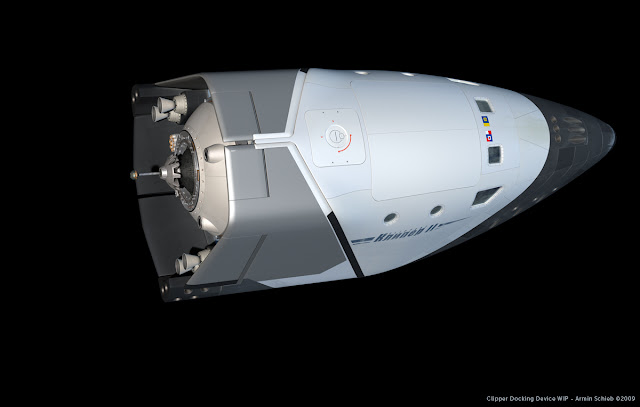 And if it does not help, then it’s about replacing any organs.
And if it does not help, then it’s about replacing any organs.
That is why the Russian United Rocket and Space Corporation (ORSC) agreed on an experiment to use a 3D bioprinter on the International Space Station (ISS). Its developer was the Russian laboratory 3D Bioprinting Solutionsspecializing in bioprinting technologies. Scientists hope that the magnetic bioprinter will make it possible to create tissues and organs in space. It is expected that the device will be delivered to the ISS by 2018.
There are no analogues of the Russian project abroad yet.
5. Construction of structures using construction 3D printing.
One of the most basic problems in the construction of buildings on extraterrestrial objects is the limited amount or lack of building material. The only available raw materials that do not need to be transported from our planet are local geological rocks. It is not surprising that scientists are solving the problem of using them in the construction of buildings.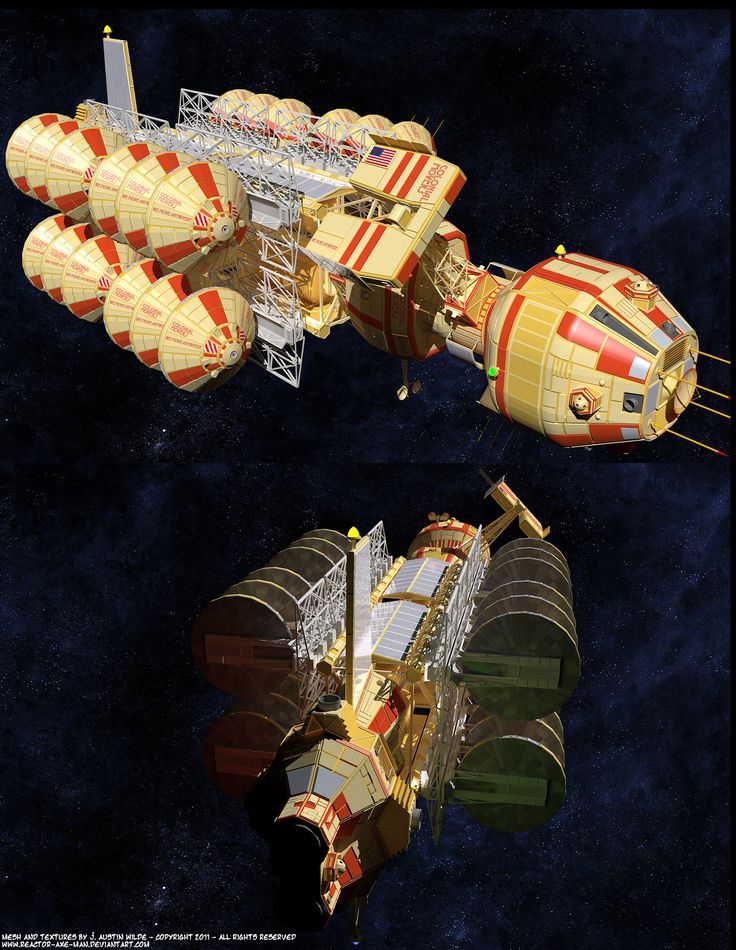
For example, engineers at Northwestern University in the US have found a way to use quality materials in situations where resources are limited. We are talking about the process of additive manufacturing from special materials that mimic the lunar and Martian regolith. These are strong and elastic materials that are produced using powdered substances that resemble rocks from the surface of the Moon and Mars.
It is likely that this technology will be used in the colonization of Mars. Due to extreme temperatures and high radiation on the surface of the "red planet", the first colonizers will need reliable shelters. NASA experts propose using 3D printing to create a "dome" of ice from the surface of Mars, covered with a transparent membrane of fluoroplast-40. One of the main advantages of a water-based dwelling is that such walls protect from cosmic radiation, but do not prevent the penetration of light - this creates some comfort. In addition, when choosing materials, other criteria were taken into account - their strength and reliability, the ability to withstand the difficult conditions of Mars.
The European Space Agency (ESA) is working in the same direction and has already achieved some results. Scientists from the Austrian University of Applied Sciences in Wiener Neustadt managed to 3D print a small needle and a corner wall from JSC-Mars-1A material, which mimics Martian soil.
In addition to serious research, there are quite unexpected projects. So, experts from the ESA we mentioned thought about saving the souls of the first lunar colonists and planned to build a temple on the moon using 3D printing. This building, poetically named Temple of Eternal Light, will be located in the center of a residential complex for the first lunar settlers and will combine a prayer place and an observatory. The designers believe that the temples on the moon will revive the lost connection between mankind and the cosmos.
However, according to Vyacheslav Bobin, head of the Center for the Study of Natural Substances at the Institute for Comprehensive Exploration of the Subsoil of the Russian Academy of Sciences, the construction of settlements on the Moon is not such a fantastic prospect as you might think.